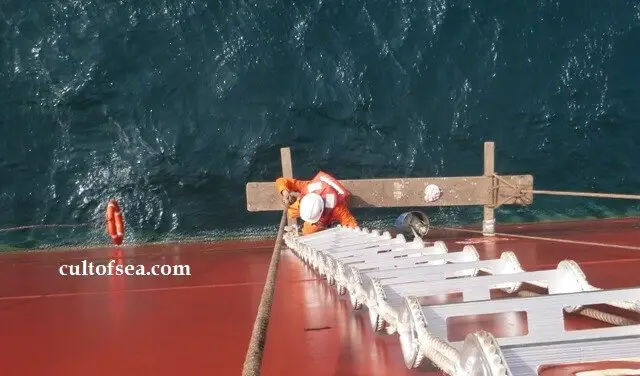Definition Working aloft or Overside means a work being performed at a height and involving risk of falling, resulting in an injury. Guidelines As a general rule, personnel should not be permitted to work overside when the vessel is underway unless it is absolutely necessary and as determined by the Master.Personnel under training shall not be assigned aloft or over side related jobs. The power source to potential hazards such as ships whistle, radar, etc. should be isolated from their power source and accidental activation prevented by the use of warning signs and / or removal of … [Read more...]
